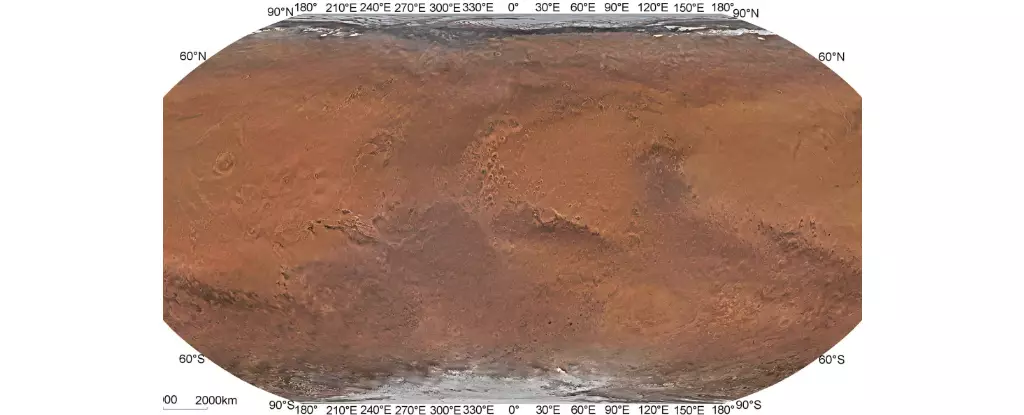China’s Tianwen-1 mission marks a significant milestone in the exploration of Mars. With its six robotic elements, including an orbiter, a lander, deployable cameras, a remote camera, and the Zhurong rover, the mission is set to delve into the geological and internal structure of Mars. The primary objective is to characterize the Martian atmosphere, search for signs of water, and explore the possibility of past or present life on the red planet. The mission, led by the China National Space Administration (CNSA), aims to enhance our understanding of Mars through cutting-edge technology and scientific research efforts.
In a groundbreaking feat, the Tianwen-1 mission has produced the first high-resolution global color-image map of Mars with spatial resolutions exceeding 1 km (0.62 mi). The map, created by a team of researchers from the Chinese Academy of Sciences (CAS), offers unprecedented insights into the Martian surface. Led by Professor Li Chunlai and Professor Zhang Rongqiao, the team utilized data from the orbiter’s remote-sensing images to generate this innovative map. Published in the journal Science Bulletin, the research paper titled “A 76-m per pixel global color image dataset and map of Mars by Tianwen-1” showcases the team’s remarkable achievement in mapping Mars with unparalleled precision.
While previous missions have contributed to global maps of Mars, the Tianwen-1 mission stands out for its high-resolution capabilities. Unlike existing maps with lower spatial resolutions, the Tianwen-1 map provides intricate details of the Martian surface with exceptional clarity. By optimizing orbit measurement data and processing image data meticulously, the research team created a seamless global mosaic of Mars. The true colors of Mars were revealed through data acquired by the Mars Mineralogical Spectrometer (MMS), enhancing the authenticity of the color representation on the map. The release of the Tianwen-1 Mars Global Color Orthomosaic 76 m v1 signifies a monumental leap in Mars mapping technology, setting a new standard for future exploration endeavors.
The high-resolution Mars map produced by the Tianwen-1 mission holds immense potential for future exploration missions to the red planet. As space agencies around the world gear up for crewed missions to Mars in the coming decades, the detailed map could serve as a valuable reference tool. By identifying potential landing sites with precision and accuracy, the map can aid in the decision-making process for future robotic explorers. Moreover, the map’s role in advancing scientific research on Mars cannot be understated. With its comprehensive coverage and detail, the map opens up new avenues for investigating the planet’s geological features, mineral composition, and potential habitats for microbial life.
The Tianwen-1 mission’s groundbreaking Mars color-image map represents a significant achievement in the field of planetary exploration. By shedding light on the mysteries of Mars with unprecedented clarity and detail, the map has set a new standard for mapping technology. As the quest to unravel the secrets of the red planet continues, the map produced by the Tianwen-1 mission will undoubtedly play a pivotal role in shaping future Mars exploration endeavors.


Leave a Reply